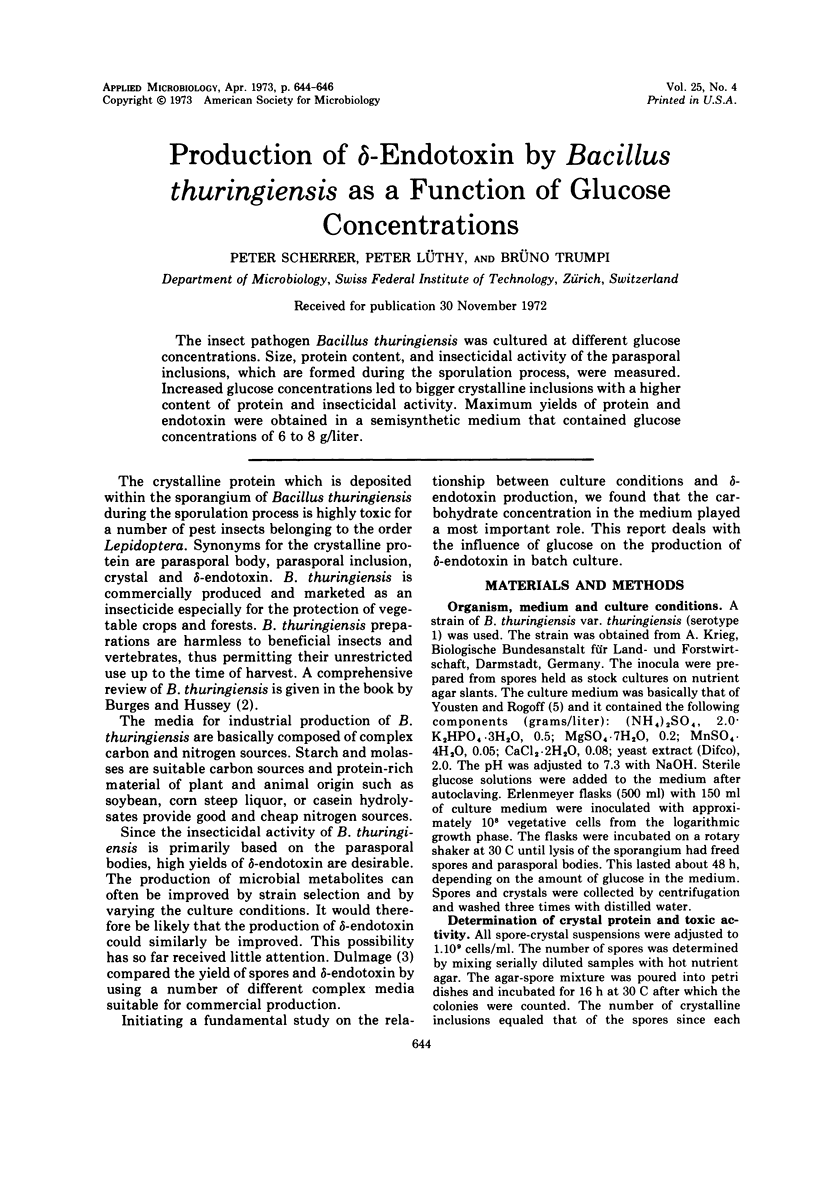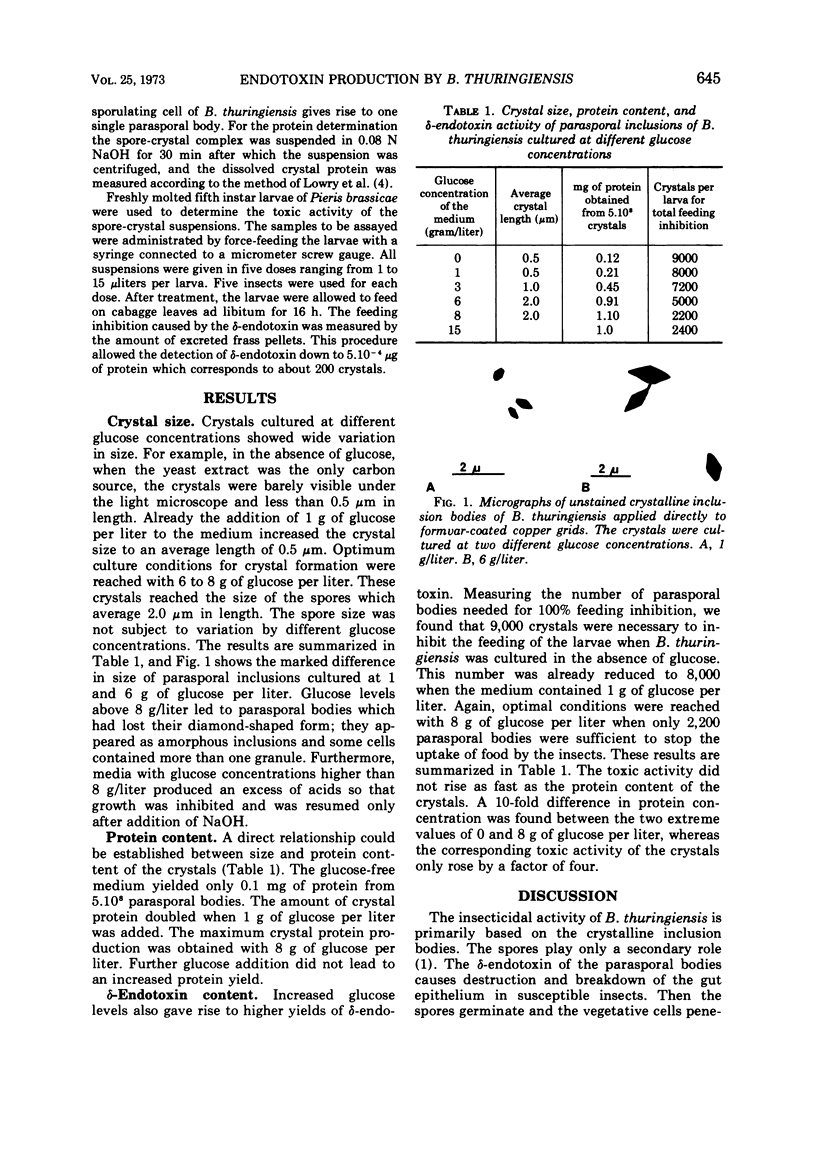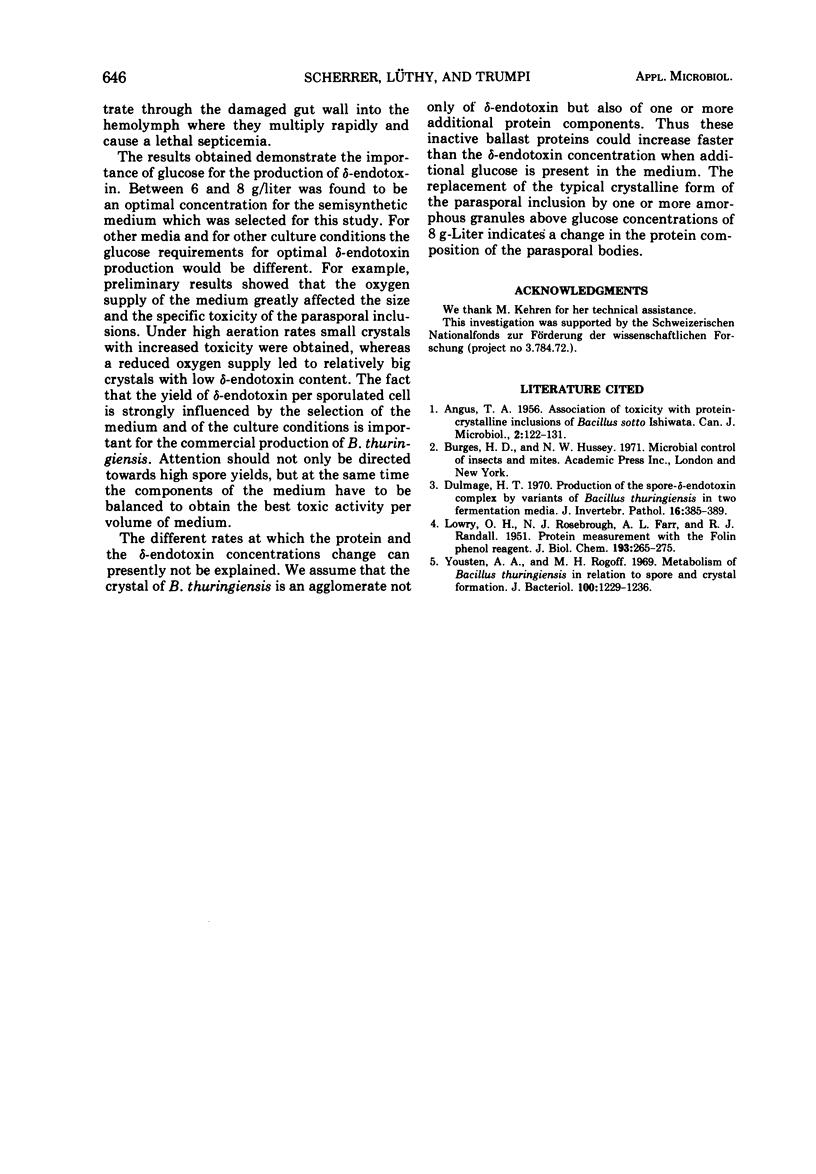Abstract
The insect pathogen Bacillus thuringiensis was cultured at different glucose concentrations. Size, protein content, and insecticidal activity of the parasporal inclusions, which are formed during the sporulation process, were measured. Increased glucose concentrations led to bigger crystalline inclusions with a higher content of protein and insecticidal activity. Maximum yields of protein and endotoxin were obtained in a semisynthetic medium that contained glucose concentrations of 6 to 8 g/liter.
Full text
PDF


Selected References
These references are in PubMed. This may not be the complete list of references from this article.
- ANGUS T. A. Association of toxicity with protein-crystalline inclusions of Bacillus sotto Ishiwata. Can J Microbiol. 1956 Apr;2(2):122–131. doi: 10.1139/m56-017. [DOI] [PubMed] [Google Scholar]
- Dulmage H. T. Production of the spore-delta-endotoxin complex by variants of bacillus thuringiensis in two fermentation media. J Invertebr Pathol. 1970 Nov;16(3):385–389. doi: 10.1016/0022-2011(70)90157-6. [DOI] [PubMed] [Google Scholar]
- LOWRY O. H., ROSEBROUGH N. J., FARR A. L., RANDALL R. J. Protein measurement with the Folin phenol reagent. J Biol Chem. 1951 Nov;193(1):265–275. [PubMed] [Google Scholar]
- Yousten A. A., Rogoff M. H. Metabolism of Bacillus thuringiensis in relation to spore and crystal formation. J Bacteriol. 1969 Dec;100(3):1229–1236. doi: 10.1128/jb.100.3.1229-1236.1969. [DOI] [PMC free article] [PubMed] [Google Scholar]


